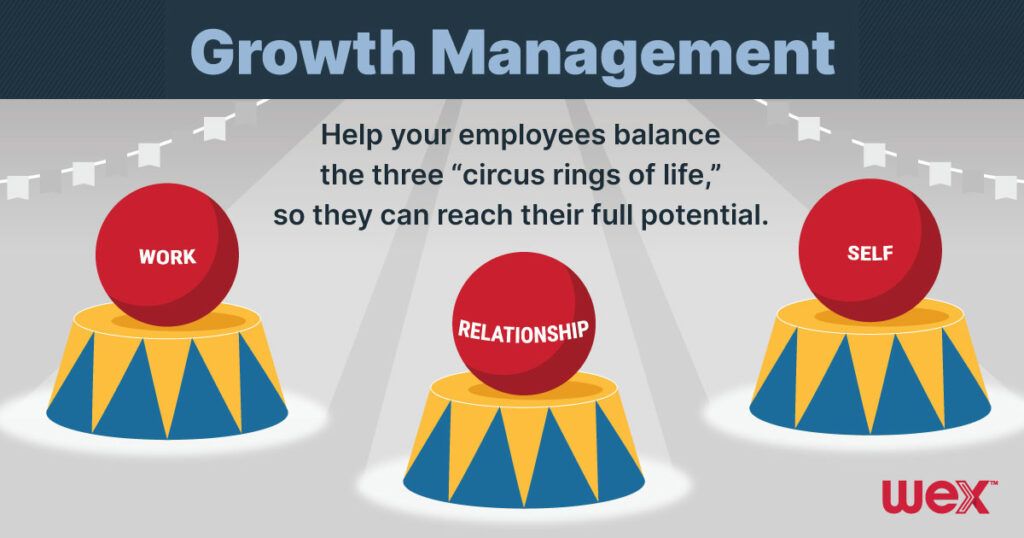Stay connected
Subscribe to our health benefits blog and follow us on social media to receive all our health benefits industry insights.

Putting out fires. Not enough time for strategy. Even less time to focus on the personal and professional growth of yourself and your team (if you manage one). These are real issues. And the churn of Zoom calls in the last couple years has only compounded the issue for many.
With so many little things popping up during a work day, how well do your employees manage these needs without losing sight of the big picture? Jones Loflin, who is a keynote speaker, author, and coach, sat down with us for a recent episode of our Benefits podcast recording to share his expertise on time management and staying focused on growth management.
The working day only has so many hours. That’s what makes time management crucial to growth and success. We all want to prioritize time management and growth management, but sometimes they are the first things to get cut. Loflin referenced his book Juggling Elephants, where he compares managing the many aspects of life to managing a circus.
“We all have three rings to our life circle that we have to manage well,” Loflin said on Benefits. “We have a work ring, a self ring, and a relationship ring. All three are extremely important and have to be managed well. But which one do we neglect most often? The circus teaches us that all three are important, but when we neglect one of them, it impacts our ability to perform well in the other two.
“We have to take better care of ourselves to be more effective at work. We have to take better care of our relationships if we’re going to be more happy with ourselves. All three rings are connected and impact one another.”
So, what can you do as a leader to implement proper time management and growth within your team?
Many variables affect an employee’s overall productivity and growth. It often comes down to improper prioritization of tasks and time, setting boundaries, and unclear goals.
What you allocate time to throughout your workday matters most in the long run. Typically, a person who gives themselves one thing to do in a day will generally take all day to do it. Additionally, if someone adds 12 tasks to a to-do list, most people will get at least 7 of those tasks done.
Loflin recommends throwing away your to-do list and adopting the calendar method. Put your to-do list into action by blocking off a period of time within each workday to take care of several small items and components of projects. The calendar method helps quantify time as a resource and gives you a more accurate representation of your day.
Many people have a hard time holding themselves to the schedule and saying “no” to others. Rather than bluntly declining someone who is asking more out of you, here are some other phrases you can use:
As an employee, Loflin emphasizes being OK with asking for clarification, something along the lines of: “This is where I planned on investing my time. Does that align with what you believe is most important for me to be focusing on right now?” Everything comes back to communication.
You may want to take leadership to the next level, but the common question is, “How”? It can be challenging to know if you’re making progress each day as a leader and if your team is pursuing growth. Returning to the basics of communication and thinking intuitively can help employers efficiently manage their teams and set examples as a leader.
Setting aside time to connect on a weekly basis with your team members can help a team evolve. With your direct employees, allow this time to be theirs to talk through things with you. During these one-on-one conversations or even as you are ending your workday, reflect on if you’re making progress. Loflin’s 5F questions to help you do this are:
Check out Loflin’s website for more insight on time management, growth management, and helping employees thrive.

The information in this blog post is for educational purposes only. It is not legal or tax advice. For legal or tax advice, you should consult your own counsel.
Subscribe to our health benefits blog and follow us on social media to receive all our health benefits industry insights.